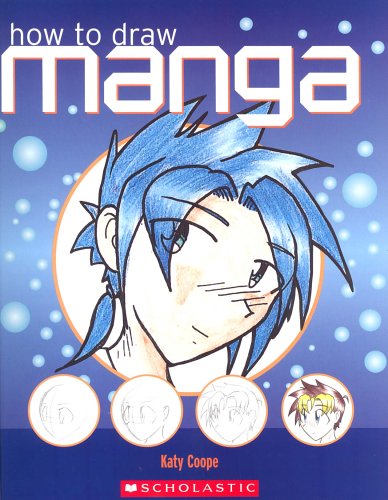Interest
How to Draw Manga Artist Katy Coope Redraws Cover Illustration After Almost 20 Years
posted on by Kim Morrissy
In 2002, Scholastic published a book titled How to Draw Manga, which featured drawing advice from the then 16-year-old artist Katy Coope. The cover image is shown below:

Why is this long out-of-print book relevant today? Last Thursday, pixel artist TAHK0 started the #HowToDrawMangaRedraw hashtag by encouraging artists to redraw the character on the cover illustration in their own style. He also paid his respects to the book by tweeting: "I spent many summer days redrawing characters from this book as a kid & now I can look back & appreciate the role this played in becoming the artist I am today. It's time for us artists to make that pilgrimage back to where many of us began and redraw a character one more time."
Over the next few days, the hashtag trended in the United States, eventually catching the attention of Katy Coope herself. On Monday, she posted her own take on the cover in her modern art style:
Me: Don't do it don't do it you're rusty af and everyone is the tag is so good and they'll find you rip you apart oh god
— KT Coope 🐝🇪🇺 (@kilotango) April 11, 2021
Me: Yes, but, the sheer meme power though?
Hi #HowToDrawMangaRedraw. It's me. I'm late to this kinda overwhelming hashtag but while you're here, thread time: pic.twitter.com/eC4zMgd451
She also shared her personal story regarding her involvement in the book and what happened since. She wrote about how she was initially happy to work on the book because she was just a teenager at the time. She revealed that the character on the cover was a flipped illustration and that she never intended it to become the cover art, which she protested at the time. She also spoke frankly about the art mistakes in the book, and how she tried to keep the tone as open-minded and upbeat as possible.
"I also had to fight pretty hard to keep HTDMM as emphatic about 'There are lots of ways to do things, here are some options, now go find your own style' as it is," she recalled. "That's always been important to me. Even as a kid, I only ever really wanted to be a springboard for people."
She then shared how she suffered burnout due to negative attitudes she was exposed to around the book. At the time, she stopped drawing for pleasure, and only much later did she find the desire to post her artwork again.
She gave some frank advice for artists: "If you ever find yourself thinking 'If I just work hard enough, it'll stop hurting', it's time to check yourself. That plan never works. Take care of yourself. It's taking me a long time to undo the damage. I'm still not there, even if I have made some progress." She stressed that the worth of the book is not in the polish or techniques it teaches but in "sharing a love of art, and love is what gets people to DO the work. Everyone has to start somewhere and a teacher's job is to give them fuel to get where they're going."
She concluded by thanking people for their kindness and understanding towards her, and stated: "You don't get good artists without them being rough first. It costs you nothing to scroll past art you don't like or better, to encourage them. It costs the future a potential cool artist when you crush a beginner. Be kind. We're all works in progress, forever."